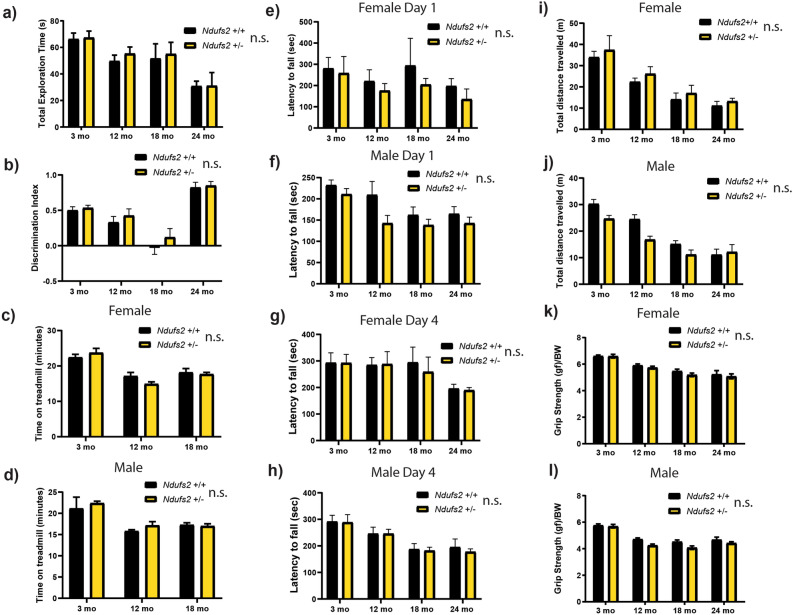Figure 2.
Longitudinal behavioral analysis of Ndufs2+/- and Ndufs2+/+ mice. (a) Novel object recognition test total exploration time. Male and female data combined. n = 7–25 per group, multiple t-tests not significant. (b) Novel object recognition test discrimination index. Male and female data combined. n = 7–25 per group, multiple t-tests not significant. (c) Female forced maximal exercise on accelerating treadmill challenge total time on treadmill. n = 4–8. Multiple t-tests not significant. (d) Male forced maximal exercise on accelerating treadmill challenge total time on treadmill. n = 2–6. Multiple t-tests not significant. (e) Female day 1 accelerating rotarod challenge latency to fall. n = 4–13. Multiple t-tests not significant. (f) Male day 1 accelerating rotarod challenge latency to fall. n = 5–18. Multiple t-tests not significant. (g) Female day 4 accelerating rotarod challenge latency to fall. n = 4–13. Multiple t-tests not significant. (h) Male day 4 accelerating rotarod challenge latency to fall. n = 5–18. Multiple t-tests not significant. (i) Female open field test total distance. n = 4–13. Multiple t-tests not significant. (j) Male open field test total distance. n = 5–18. Multiple t-tests not significant. (k) Female grip strength. n = 4–13. Multiple t-tests not significant. (l) Male grip strength. n = 5–18. Multiple t-tests not significant. (a–l) Multiple t-tests refers to adjusted t-tests with a two-stage linear step-up procedure of Benjamini, Krieger and Yekutieli, with Q = 1% Ndufs2+/+ vs Ndufs2+/− independently for each time point. n.s. not significant by genotype.

